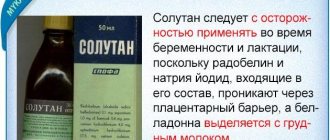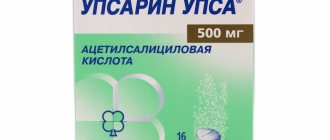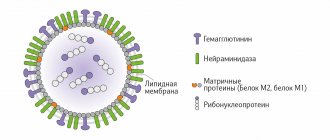Pharmacodynamics and pharmacokinetics
Ringer-Locke solution is capable of regulating the water-salt and acid-base balance in the human and animal body. The product is closest to the natural composition of blood plasma . The drug inhibits the processes of aggregation blood elements and improves tissue perfusion .
Electrolytes thin the blood, and glucose prevents the development of hypoglycemia .
Very quickly after injection, the drug is distributed to organs and tissues.
Ringer solution for infusion 500ml No. 1
Name
Ringer solution for inf. in polymeric contact. 500 ml in pack No. 1
Description
The drug is a clear, colorless solution.
Release form
Solution for infusion
Dosage
500ml
Pharmacological properties
Pharmacodynamics
A rehydrating agent, it has a detoxifying effect, stabilizes the water and electrolyte composition of the blood. When used as a means of replenishing the volume of circulating blood, due to the rapid exit from the bloodstream into the intercellular space, the effect lasts only for 30-40 minutes (and therefore the solution is suitable only for short-term replenishment of the volume of circulating blood). Sodium, the main cation of extracellular fluid, takes part in the control of water distribution, water balance, and osmotic pressure of body fluids. Sodium is also associated with chlorine and bicarbonate in regulating the acid-base status of body fluids. Potassium, the main cation of intracellular fluid, takes part in the metabolism of carbohydrates and protein synthesis, and is needed to regulate the conduction of nerve impulses and muscle contraction. Calcium, in ionized form, is needed for the functional mechanism of blood coagulation, normal heart function, and regulation of neuromuscular excitability
Pharmacokinetics
The drug does not undergo metabolic transformations in the body. It is quickly excreted by the kidneys, 80% is excreted within 4 hours, and completely excreted after 12-24 hours. Information on pharmacokinetics refers to the ions included in the composition of the drug.
Indications for use
Short-term replenishment of circulating blood volume, isotonic and hypotonic dehydration of various origins.
Directions for use and doses
Before administration, the doctor is obliged to conduct a visual inspection of the bottle with the drug intended for transfusion. The solution must be clear and free of suspended particles or sediment. The medicine is considered suitable for use if the label is present and the packaging is sealed. The results of the visual examination and label data (name of the drug, manufacturer, batch number and expiration date) must be recorded in the patient’s medical history. Dosage. The rate of infusion and the volume of injected solution depend on the clinical condition of the patient, body weight, age, type and degree of dehydration/hypovolemia, and concomitant therapy. When used simultaneously with other drugs administered intravenously, incompatibility must be taken into account. Adolescents, adults and elderly patients: Maximum daily dose: For adults, elderly patients (over 65 years of age) and adolescents (12-18 years of age) maximum daily volume: 500-3000 ml/24 hours or 30-40 ml/kg/24 hours . If necessary, it is permissible to administer up to 50 ml/kg/24 hours. Maximum infusion rate: For adults, elderly patients (over 65 years old) and adolescents (12-18 years old) the maximum infusion rate is 60-80 drops per minute, for severe disease - up to 90 drops per minute (up to 5 ml / kg / hour or 1.7 drops/kg/min.). Conversion of milliliters into drops: 20 drops are approximately equal to 1 ml of solution. Directions for use: Intravenous, drip, at an average rate of 60 drops per minute; in severe cases of the disease - in a stream. The duration of use depends on the clinical condition of the patient, on average 3-5 days.
Use during pregnancy and lactation
Clinical and preclinical studies on the use of Ringer's solution during pregnancy and lactation have not been conducted. Practice shows that with timely examination of fluid and electrolyte balance, there are no contraindications for use during pregnancy and lactation.
Precautionary measures
For patients with heart and/or pulmonary insufficiency, large volumes of fluid can only be administered in exceptional cases, under the supervision of a physician. During the infusion of Ringer's solution, it is necessary to monitor indicators of water-salt metabolism with control of the content of sodium, potassium, calcium and chlorine ions in the blood plasma. Administration of sodium chloride solutions to patients with arterial hypertension, heart failure, peripheral edema, pulmonary edema, cerebral edema, renal dysfunction, preeclampsia, hyperaldosteronism, other diseases or treatments (for example, corticosteroids/steroids) characterized by sodium retention in the body ( see also section “Interaction with other drugs”), should be carried out with caution. The administration of potassium chloride solutions to patients with cardiac disease or the presence of predisposing factors for hyperkalemia, such as renal or adrenal insufficiency, acute dehydration, or significant tissue destruction, for example, as a result of severe burns, should be carried out with caution. The administration of calcium chloride solutions must be carried out with caution, carefully following the intravenous technique, to prevent extravasation or intramuscular administration. Solutions containing calcium ions should be administered with caution to patients with impaired renal function or diseases associated with increased vitamin D concentrations, such as sarcoidosis. It is unacceptable to use the same infusion system for joint administration of Ringer's solution and blood transfusion, as this can lead to the formation of blood clots. Ringer's solution does not provide sufficient concentrations of potassium and calcium to correct serious electrolyte imbalances. Therefore, after reversing dehydration with Ringer's solution, other infusion solutions can be used to further correct electrolyte abnormalities, if necessary. When using and mixing Ringer's solution with other drugs simultaneously, the rules of asepsis should be observed.
Interaction with other drugs
Sodium-related interactions: - corticosteroids/steroids and carbenoxolone, with simultaneous use there may be an increase in sodium and water retention (edema and hypertension); Potassium-related interactions: – potassium-sparing diuretics (amiloride, spironolactone, triamterene alone or in combination); – angiotensin-converting enzyme (ACE) inhibitors and, therefore, angiotensin II receptor antagonists; – cyclosporine, tacrolimus; These drugs increase the concentration of potassium in the blood plasma and may, for example, in the case of renal failure, increase the development of life-threatening hyperkalemia. Calcium-Related Interactions: – Exposure to digitalis glycosides increases calcium levels and can cause serious and life-threatening cardiac arrhythmias; – administration of thiazide diuretics and vitamin D simultaneously with calcium may cause the development of hypercalcemia; – absorption of bisphosphonates, fluorides, some fluoroquinolones and tetracyclines is reduced, and the release of calcium salts increases. The simultaneous use of calcium salts with bisphosphonates, fluorides, some fluoroquinolones and tetracyclines may lead to a decrease in their bioavailability.
Contraindications
Hypersensitivity to the components of the drug, decompensated heart failure, pulmonary edema, cerebral edema, oliguria, anuria, acidosis, hypervolemia, hyperchloremia, hypercalcemia, hypernatremia, concomitant therapy with GCS. With caution - heart failure, arterial hypertension, impaired liver or kidney function. Hypertensive dehydration, hyperkalemia, ascites in liver cirrhosis, simultaneous use of cardiac glycosides.
Compound
Sodium chloride Potassium chloride Calcium chloride hexahydrate in the form of calcium chloride Excipient: Water for injection
Overdose
Overdose can lead to hypernatremia, hyperchloremia, hypercalcemia, hyperkalemia and metabolic acidosis. Overdose or too rapid administration, especially in patients with impaired renal function and decreased sodium excretion, leads to sodium overload and edema. In this case, dialysis is necessary. Excessive administration of potassium, especially in patients with impaired renal function, can lead to the development of hyperkalemia. Symptoms include limb paraesthesia, muscle weakness, paralysis, cardiac arrhythmia, heart block, cardiac arrest and confusion. Treatment of hyperkalemia includes calcium, insulin (with glucose), sodium bicarbonate, ion exchange resins, or dialysis. Excessive administration of calcium salts can lead to hypercalcemia. Symptoms of hypercalcemia may include loss of appetite, nausea, vomiting, constipation, abdominal pain, muscle weakness, confusion, polydipsia, polyuria, nephrocalcinosis, and in severe cases, cardiac arrhythmia and coma. Too rapid intravenous administration of calcium salts may also result in oral tingling and burning, redness, and peripheral vasodilation. Mild asymptomatic hypercalcemia can usually be corrected by replacing the infusion of solutions containing calcium with an infusion of solutions without calcium. It is recommended to discontinue medications that aggravate hypercalcemia, such as vitamin D. Severe hypercalcemia requires emergency treatment (eg, loop diuretics, hemodialysis, calcitonin, bisphosphonates, or trisodium edetate). Excessive administration of chloride ions can lead to loss of bicarbonate leading to hyperchloremic acidosis. In case of overdose of a drug prescribed simultaneously with Ringer's solution, appropriate therapy is used.
Side effect
When using Ringer's solution, the following adverse reactions were very often recorded (in more than 10% of patients): - overhydration, in patients with heart failure - aggravation of congestion in the systemic and pulmonary circulation (peripheral edema, pulmonary edema); – electrolyte disturbances. Side effects may be due to improper intravenous infusion technique. These include fever, injection site reactions, pain, phlebitis, venous thrombosis, and hematoma. Side effects may be associated with the addition of other drugs to Ringer's solution. If adverse reactions occur, administration of Ringer's solution should be discontinued. If an adverse reaction occurs, the infusion should be stopped, the patient's condition assessed and the necessary therapeutic measures prescribed. To reduce the risk of possible incompatibility that may occur when mixing this solution with other prescribed supplements, the final infusion solution should be checked for cloudiness or precipitation immediately after mixing, before use, and periodically during use. If the contents of the container become cloudy, do not use.
Storage conditions
Store at a temperature not exceeding 25 ºС. Keep out of the reach of children.
Buy Ringer solution for infusion 500ml No. 1 in a pharmacy
Price for Ringer solution for infusion 500ml No. 1
Instructions for use for Ringer solution for infusion 500ml No. 1
Indications for use
The drug is prescribed:
- during dehydration and severe intoxication of the body due to dysentery , food poisoning, diarrhea and vomiting, El Tor cholera ;
- if dehydration occurs due to circulatory disorders, severe blood loss;
- for burns, frostbite, shock ;
- if inflammation of the peritoneum develops - peritonitis .
Ringer-Locke solution is also used for animals with similar symptoms, albeit in a different dosage.
Ringer-Locke solution: instructions for use and dosage
The veterinary drug is produced in glass bottles of 100 ml. For medical purposes, containers of a different size can be used. The shelf life of the medicine is 2 years from the date of manufacture indicated on the label. Must be stored at room temperature. The drug is intended for intravenous or subcutaneous injection.
Be sure to read:
Imaverol: instructions for cats, when indicated and contraindicated, method of application, dosage
The veterinarian prefers to put in a drip, since the greatest therapeutic effect is achieved with a uniform and gradual flow of glucose and salts into the blood. The maximum daily dose is 150 ml, single dose - 50 ml. If a visit to the clinic or the veterinarian’s arrival at home is delayed, the cat’s owner can provide independent assistance to the pet. Intramuscular administration will do neither harm nor benefit.
Ringer's solution is drawn into a large syringe and injected subcutaneously into several places. Bumps form, but the body absorbs the liquid before our eyes. Up to 50 ml of liquid can be injected into your pet once. Dosage by weight has not been developed, and cases of overdose are unknown. Therefore, the kitten is given 5-10 ml of liquid at a time.
Ringer's solution, which does not contain glucose, has a similar effect. Therefore, the drug does not have a detoxifying effect. In emergency situations, use a saline solution that contains only sodium chloride. The medical products Hemodez and Poliglyukin have a similar effect, but they should not be used without the permission of a veterinarian.
Interaction
Caution should be used when combining the medicine with certain drugs, such as NSAIDs , estrogens or anabolic steroids .
When combined with cardiac glycosides, the load on the cardiovascular system increases.
Concomitant use with diuretics , angiotensin-converting enzyme or potassium supplements can lead to hyperkalemia .
Analogs
Level 4 ATC code matches: Disol
Sterofundin
Trisol
Ringer's solution
Gik, Glyukosol, Darrow, Glycosteril, Acesol, Yonosteril, Ringer's solution, Disol, Trisol, Chlosol, Saline solution.






